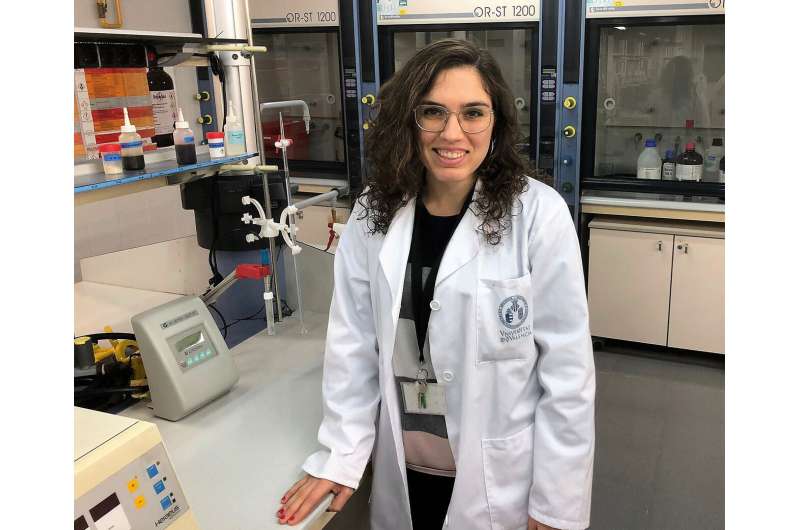New method helps detect biocontaminants that are easily transmitted in water and used in industry

Carolina Belenguer and EnricPellicer, from the Department of Analytical Chemistry at the University of Valencia, have developed in the last year a new method for the detection of polychlorinated biphenyls (PCBs) in environmental water samples. It is an innovation of great importance because it facilitates the detection of these persistent organic pollutants (POPs), which are harmful to the environment and human health, and are the causes of the development of certain types of cancer.
Persistent organic pollutants are an environmental problem given their bioaccumulation and their exponential increase throughout the food chain, and because they cause serious adverse effects on human health and the environment. In addition, the World Health Organisation has classified them as high-priority compounds in their treatment. PCBs are part of this group, they are environmental pollutants widely used in industry that can be found mainly in meat, fish and other everyday products. They can cause certain types of cancer, with children and pregnant women as the main risk groups.
The research team at the University of Valencia has focused on developing a method by which contaminated water is filtered and polychlorinated biphenyls are retained. The absorbent material used consists of silica modified with cyclodextrin molecules, which facilitates the selective extraction of contaminants for their subsequent detection by gas chromatography with electron capture detector (GC-ECD). This method makes it possible to separate compounds based on their volatility and is known to be very sensitive to halogenated compounds.
"In recent decades, industrial and social development has led to an exponential increase in environmental pollution. Although there is enough legislation in this regard, there are still many pollutants that, due to the low concentrations in which they are found, are not regulated and therefore their presence is not regularly monitored, partly due to the difficulty of detecting them and quantify them," says Carolina Belenguer. "However, they are equally bad for human health. Therefore, research in the field of Analytical Chemistry has a key role to play, with increasingly fast, reliable and sustainable experimental procedures," adds Belenguer.
This innovative method has great advantages compared to those used so far, as the synthesis of the solid phase (part of the filtration process) is cheap, simple and sustainable because it can be reused for its stability and temperature resistance. On the other hand, the time used in the analysis is short and allows to detect very low levels of PCB. However, despite its specificity, the method is not completely selective, which is why certain families of other pollutants could interfere and make it difficult to quantify PCBs.
More information: Carolina Belenguer-Sapiña et al. A new proposal for the determination of polychlorinated biphenyls in environmental water by using host-guest adsorption, Science of The Total Environment (2020). DOI: 10.1016/j.scitotenv.2020.138266
Journal information: Science of the Total Environment
Provided by Asociacion RUVID





















